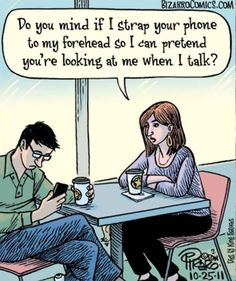Communicating in person has always been the gold standard for social connection. To the point where many people say things like, “Get off of Facebook and be social!”
The common beliefs about the limitations of text based communication, that they miss nuance, context, tone, and emotion, like we have in the real world. To many, this is a good reason to “get off of Facebook and meet people in real life.”
With email and SMS messaging, you were limited to exclamation points and CAPITAL LETTERS to convey tone. Flowerly prose might invoke some emotions, or an LOL or ROTFL, but for the most part, email and SMS left communication lacking. Lacking enough to cause many baby boomers to wish for the days when everyone wasn’t so rude, constantly glued to their phones.
To some extent, I agreed with this point…until yesterday!
We all know about emoji’s and (while we might look like fools mis-using emojis with teenagers), they slowly opened the door to conveying emotion better than simple text.
There are however new tools that enable interactions that not only capture a wide range of emotions, but arguable enable more authentic communication than face to face communication.
I listened to a brilliant podcast from A16Z about Stickers, Filters, Memes, and Livestream, and my eyes opened to a world where technology is layered onto “real life” to the point where it is not only replicating real world communication, but in many cases it is enabling deeper, more authentic, and vulnerable interactions that are much more difficult in the real world.
It’s hard to come up with the words for this, but… “sometimes you just want to say “I feel totally Nicki Minaj side-eye dot-GIF about this”, and no one can give a side-eye as good as Nicki Minaj can.”
I have a close childhood friend that lives across the country from me and we rarely interact more than a few times a year. It seems almost awkward to just call and say, “Hey, I am thinking about you.” But, sending a sticker that says something similar is not only easy and natural, it doesn’t carry with it the social pressures for instant response or a whole conversation to ensue.
I am by no means an expert on these new ways to communicate, but I realize now how foolish it was to buy into this idea that digital communication isn’t real communication.
As humans, we crave connection. We crave belonging, and arguably the most fundamental part of living is interacting with others. I used to be fooled by the idea that technology is a distraction from real socializing, but now I see that using stickers, filters, Biaoqing, emojis, etc… layered with live streaming, voice notes, text, etc…we have found ways to translate and possibly improve some forms of digital communication over real world interactions.
You can literally a take bunch of pictures of yourself showing different faces and emotions, mark them up with filters and share them when appropriate to demonstrate your emotions.
We now have creative and fun ways to express ourselves and interact with others, in our own comfortable way, and this is just one of the early iterations of how we communicate online.
For the longest time I bought into this “Real World vs. Virtual World” argument, but now it has become abundantly clear to me that the virtual world augments the real world and in fact creates and enables new types of interactions that not only never existed before, but allow us to connect on a deeper human level than face to face interactions are able to.
Whether it’s the internet of things, or messaging apps on smart phones, or other technologies, as humans we will always crave communication and as innovators, we will always seek ways for technology to enhance our lives.
Bottom line, millennials and teenagers today are naturally engaging in these social messaging apps, much the same way we use telephones and email. In their minds, their form of communication is smarter than the old school way, and I’m inclined to agree to some degree. But, even if you choose to disagree, the reality is that this is their communication channel of choice and unless you learn to understand it, you’ll end up feeling like a stranger in a strange land who doesn’t speak the native language.
People under 25 don’t use email.
Facebook is like their public facing resume.
They use snapchat, filters, stickers, and messaging apps to share moments with their friends in real time, share their emotional reactions in real time, and ultimately, share their vulnerability much more willingly, opening them up to deeper, more authentic relationships.
Listen to the podcast and let me know what you think. Do you think millennials found a way to communicate in a more deeply human way than us old folks?

 Click Images To Verify
Click Images To Verify
